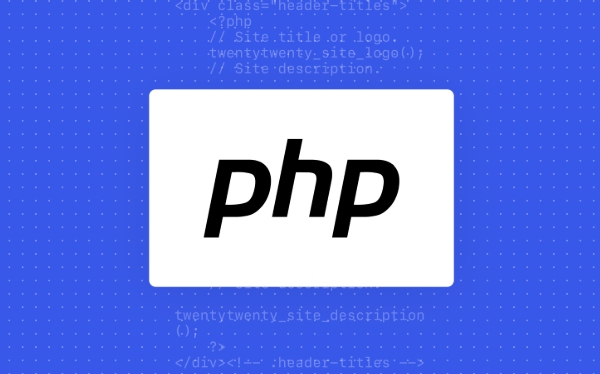 Backend Development
Backend Development
 PHP Tutorial
PHP Tutorial
 Mastering Object and Array Casting for Complex Data Structures
Mastering Object and Array Casting for Complex Data Structures
Mastering Object and Array Casting for Complex Data Structures
Jul 31, 2025 am 09:40 AMType assertion in TypeScript (e.g., as Type) informs the compiler of a value’s type without changing the runtime value, useful when handling API responses like data as User. 2. For nested structures, define interfaces (e.g., ProfileResponse) and assert cautiously, ensuring the data shape matches. 3. Always validate data before assertion using tools like Zod to parse and confirm structure, avoiding unsafe assumptions. 4. Handle dynamic or optional data with Record

When working with complex data structures in JavaScript or TypeScript, object and array casting becomes essential—especially when dealing with APIs, type assertions, or dynamic data. While JavaScript is loosely typed, TypeScript adds a layer of safety, but you still need to know how to properly cast objects and arrays to ensure your code behaves as expected.

Here’s how to master casting in realistic, complex scenarios.
1. Understanding Type Assertion vs. Type Casting
In TypeScript, there’s no real "casting" like in strongly-typed languages such as C#. Instead, we use type assertions—a way to tell the compiler, “I know more about this value’s type than you do.”

const response = await fetch('/api/user');
const data = await response.json();Here, data is any. To treat it as a specific structure:
interface User {
id: number;
name: string;
emails: string[];
}
const user = data as User;?? Important: This doesn’t change the data—it only changes how TypeScript sees it. You’re responsible for ensuring the data actually matches the type.
2. Safely Casting Nested Objects and Arrays
Complex structures often include nested objects and arrays. Consider this API response:
{
"id": 1,
"profile": {
"name": "Alice",
"contacts": [
{ "type": "email", "value": "alice@example.com" },
{ "type": "phone", "value": " 123456789" }
]
},
"roles": ["admin", "editor"]
}You might define:
interface Contact {
type: string;
value: string;
}
interface ProfileResponse {
id: number;
profile: {
name: string;
contacts: Contact[];
};
roles: string[];
}Now cast safely:
const rawData = await response.json(); const result = rawData as ProfileResponse;
But again—this is only safe if you’re confident in the shape of rawData.
3. Validating Before Casting (Don’t Trust the Data)
Blind casting is risky. Always validate, especially with external data.
Use runtime checks or libraries like Zod, Yup, or ts-check-runtime:
Example with Zod:
import { z } from 'zod';
const ContactSchema = z.object({
type: z.string(),
value: z.string(),
});
const ProfileSchema = z.object({
id: z.number(),
profile: z.object({
name: z.string(),
contacts: z.array(ContactSchema),
}),
roles: z.array(z.string()),
});
type Profile = z.infer<typeof ProfileSchema>;
try {
const parsed = ProfileSchema.parse(await response.json());
// Now you have a validated, correctly-typed object
} catch (err) {
console.error('Invalid data structure', err);
}? This is better than as—you get safety and clarity.
4. Handling Dynamic Keys and Optional Fields
Sometimes APIs return unpredictable keys (e.g., dictionaries or settings objects).
// Example: { "theme": "dark", "fontSize": 14 }
const settings = data as Record<string, string | number>;Or for partial data:
const partialUser = data as Partial<User>;
Use Record, Partial, Pick, or Omit to express intent clearly.
Also consider:
if ('name' in data) {
console.log((data as User).name);
}But prefer narrowing via type guards:
function isUser(obj: any): obj is User {
return obj && typeof obj.id === 'number' && Array.isArray(obj.emails);
}
if (isUser(data)) {
// Now TypeScript knows `data` is a User
}5. Converting Arrays with Map and Casting
When transforming arrays, avoid casting too early:
const rawItems = [{ name: 'A' }, { name: 'B' }] as { name: string }[];
const items = rawItems.map(item => ({ label: item.name, id: Math.random() }));Better: use as const or define interfaces, and avoid casting unless necessary.
If mapping from unknown data:
const users = (data as Array<{ name: string }>)
.map(u => ({ name: u.name, active: true }));Again, prefer validation over casting.
Final Tips
- ? Use
as Typeonly when you control or trust the data source. - ? Prefer validation libraries (Zod, etc.) over blind assertions.
- ? Use type guards for reusable, safe type narrowing.
- ? Leverage utility types like
Partial<t></t>,Record<k t></k>,Array<t></t>for flexibility. - ? Never assume structure—APIs change.
Mastering casting isn’t about forcing types—it’s about bridging the gap between dynamic data and static typing safely. The real skill is knowing when not to cast, and instead, validate.
Basically: assert less, verify more.
The above is the detailed content of Mastering Object and Array Casting for Complex Data Structures. For more information, please follow other related articles on the PHP Chinese website!

Hot AI Tools

Undress AI Tool
Undress images for free

Undresser.AI Undress
AI-powered app for creating realistic nude photos

AI Clothes Remover
Online AI tool for removing clothes from photos.

Clothoff.io
AI clothes remover

Video Face Swap
Swap faces in any video effortlessly with our completely free AI face swap tool!

Hot Article

Hot Tools

Notepad++7.3.1
Easy-to-use and free code editor

SublimeText3 Chinese version
Chinese version, very easy to use

Zend Studio 13.0.1
Powerful PHP integrated development environment

Dreamweaver CS6
Visual web development tools

SublimeText3 Mac version
God-level code editing software (SublimeText3)
 A Pragmatic Approach to Data Type Casting in PHP APIs
Jul 29, 2025 am 05:02 AM
A Pragmatic Approach to Data Type Casting in PHP APIs
Jul 29, 2025 am 05:02 AM
Verify and convert input data early to prevent downstream errors; 2. Use PHP7.4's typed properties and return types to ensure internal consistency; 3. Handle type conversions in the data conversion stage rather than in business logic; 4. Avoid unsafe type conversions through pre-verification; 5. Normalize JSON responses to ensure consistent output types; 6. Use lightweight DTO centralized, multiplexed, and test type conversion logic in large APIs to manage data types in APIs in a simple and predictable way.
 Advanced PHP Type Casting and Coercion Techniques
Jul 29, 2025 am 04:38 AM
Advanced PHP Type Casting and Coercion Techniques
Jul 29, 2025 am 04:38 AM
Use declare(strict_types=1) to ensure strict type checks of function parameters and return values, avoiding errors caused by implicit type conversion; 2. Casting between arrays and objects is suitable for simple scenarios, but does not support complete mapping of methods or private attributes; 3. Settype() directly modifyes the variable type at runtime, suitable for dynamic type processing, and gettype() is used to obtain type names; 4. Predictable type conversion should be achieved by manually writing type-safe auxiliary functions (such as toInt) to avoid unexpected behaviors such as partial resolution; 5. PHP8 union types will not automatically perform type conversion between members and need to be explicitly processed within the function; 6. Constructor attribute improvement should be combined with str
 Best Practices for Safe and Efficient Type Casting in Your Codebase
Jul 29, 2025 am 04:53 AM
Best Practices for Safe and Efficient Type Casting in Your Codebase
Jul 29, 2025 am 04:53 AM
Prefersafecastingmechanismslikedynamic_castinC ,'as'inC#,andinstanceofinJavatoavoidruntimecrashes.2.Alwaysvalidateinputtypesbeforecasting,especiallyforuserinputordeserializeddata,usingtypechecksorvalidationlibraries.3.Avoidredundantorexcessivecastin
 A Comparative Analysis: `(int)` vs. `intval()` and `settype()`
Jul 30, 2025 am 03:48 AM
A Comparative Analysis: `(int)` vs. `intval()` and `settype()`
Jul 30, 2025 am 03:48 AM
(int)isthefastestandnon-destructive,idealforsimpleconversionswithoutalteringtheoriginalvariable.2.intval()providesbaseconversionsupportandisslightlyslowerbutusefulforparsinghexorbinarystrings.3.settype()permanentlychangesthevariable’stype,returnsaboo
 Navigating the Pitfalls of Casting with Nulls, Booleans, and Strings
Jul 30, 2025 am 05:37 AM
Navigating the Pitfalls of Casting with Nulls, Booleans, and Strings
Jul 30, 2025 am 05:37 AM
nullbehavesinconsistentlywhencast:inJavaScript,itbecomes0numericallyand"null"asastring,whileinPHP,itbecomes0asaninteger,anemptystringwhencasttostring,andfalseasaboolean—alwayscheckfornullexplicitlybeforecasting.2.Booleancastingcanbemisleadi
 Unraveling the Intricacies of PHP's Scalar and Compound Type Casting
Jul 31, 2025 am 03:31 AM
Unraveling the Intricacies of PHP's Scalar and Compound Type Casting
Jul 31, 2025 am 03:31 AM
PHP type conversion is flexible but cautious, which is easy to cause implicit bugs; 1. Extract the starting value when string is converted to numbers, and if there is no number, it is 0; 2. Floating point to integer truncation to zero, not rounding; 3. Only 0, 0.0, "", "0", null and empty arrays are false, and the rest such as "false" are true; 4. Numbers to strings may be distorted due to floating point accuracy; 5. Empty array to Boolean to false, non-empty is true; 6. Array to string always is "Array", and no content is output; 7. Object to array retains public attributes, and private protected attributes are modified; 8. Array to object to object
 Beneath the Surface: How the Zend Engine Handles Type Conversion
Jul 31, 2025 pm 12:44 PM
Beneath the Surface: How the Zend Engine Handles Type Conversion
Jul 31, 2025 pm 12:44 PM
TheZendEnginehandlesPHP'sautomatictypeconversionsbyusingthezvalstructuretostorevalues,typetags,andmetadata,allowingvariablestochangetypesdynamically;1)duringoperations,itappliescontext-basedconversionrulessuchasturningstringswithleadingdigitsintonumb
 The Hidden Dangers of PHP's Loose Type Juggling
Jul 30, 2025 am 05:39 AM
The Hidden Dangers of PHP's Loose Type Juggling
Jul 30, 2025 am 05:39 AM
Alwaysuse===and!==toavoidunintendedtypecoercionincomparisons,as==canleadtosecurityflawslikeauthenticationbypasses.2.Usehash_equals()forcomparingpasswordhashesortokenstoprevent0escientificnotationexploits.3.Avoidmixingtypesinarraykeysandswitchcases,as






